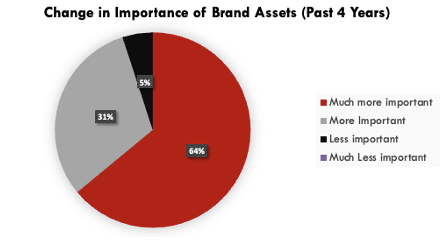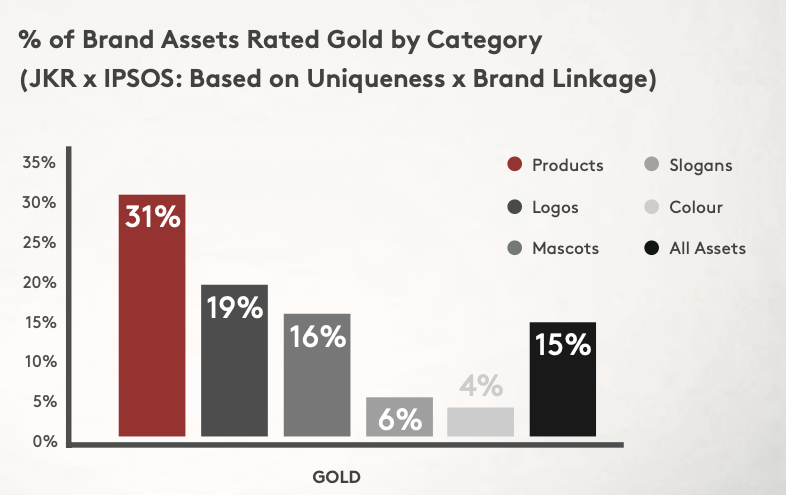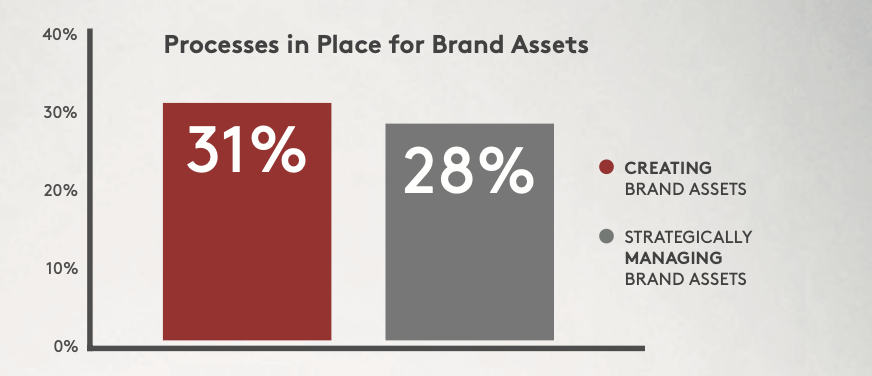Distinctive brand assets: harnessing their full potential (part 1)
This year our 16th annual brandgym research project looks at how to fully harness the potential of distinctive brand assets to drive growth. In this first of two posts, we look at the importance of brand assets for growth and the barriers that lead to only a minority of these assets being truly distinctive.
1. Brand assets are seen as key to growth…
In our research 100% of marketing directors agree that distinctive brand assets (DBAs) are an important driver of growth, with 87% rating them extremely important. Furthermore, 95% agree that the role of DBAs has become more important in the last four years (see below).
Clearly, the theory of how brand assets can build ‘distinctive memory structure’ to drive brand choice is well understood. This is confirmed by our own brandgym project experience, with most clients trying to apply these principles to some degree.

2. … but only a minority of brand assets are truly effective
Despite most marketers embracing the theory of distinctive brand assets, in reality very few brand assets are truly distinctive. In research by JKR and IPSOS we posted on here a mere 15% of 5,000+ brand assets tested got a ’gold’ rating based on two criteria:
- ‘Implicit brand linkage’: asset is instantly associated with the brand
- ‘Uniqueness’: asset is exclusively associated with the brand

3. Most companies lack a process for creating and managing brand assets …
The small proportion of truly distinctive brand assets (15%) reflects a disconnect between the theory and the practice of building brand assets.
Whilst most marketers buy into the concept of DBAs, in reality less than 1/3 of companies have a proper process for creating and strategically managing them. A related key issue is a lack of top team alignment on the importance of DBAs: “We’re missing buy-in from top management”, commented one CMO in our study.

Uber showed the perils of ditching distinctive brand assets, in its case the black & white colours and ‘U’ logo. These were replaced with two logos: one each for drivers and passengers. Only two years later the change was sensibly reversed, as we posted on here. “We’re excited to unveil a new, simplified logo that is easily recognizable and brings back the U,” the company said!

4… creating barriers to driving distinctiveness
Our research reveals three problems resulting from the lack of a rigorous, strategic process for creating and managing brand assets:
- Subjective decision making can lead to destroying distinctive brand assets. “Too many re-designs are done with no evidence to support them,” explained one CMO. Examples include Survey Monkey’s name change to Momentive, reversed within two years. We wait to see what will happen following the controversial ditching of the Twitter brand, replaced by the cryptic ‘X’ name.
- Lack of brand asset amplification across channels reduces effectiveness: “Poor discipline in applying brand assets across the consumer journey”, as one CMO put it
- Too much change prevents the creation of distinctive memory structure, including the ‘new broom’ syndrome when leadership changes: “Marketers obsession with newness”; “New people want to make their mark on the brand” – both quotes we received show that a constant search for novelty can destroy distinctiveness, not build it.
In conclusion, brand assets have the potential to build distinctiveness that drives growth, but in reality only a small minority of them are truly distinctive. This reflects the fact that less than 30% of companies have in place a process for strategically managing their brand assets.
In next week’s post, we will look at an approach to address these issues by creating, measuring and amplifying brand assets to drive distinctiveness.


